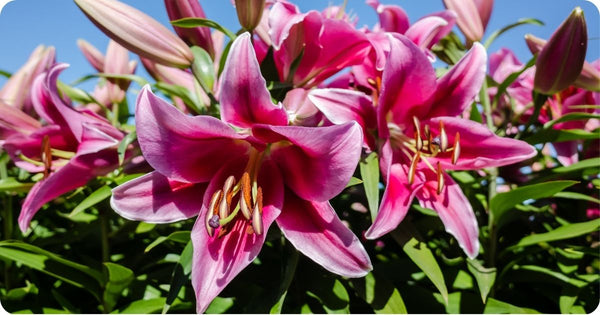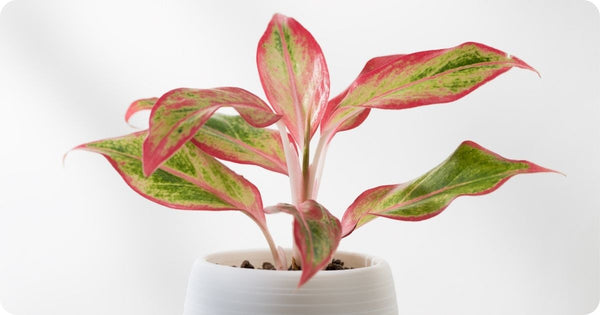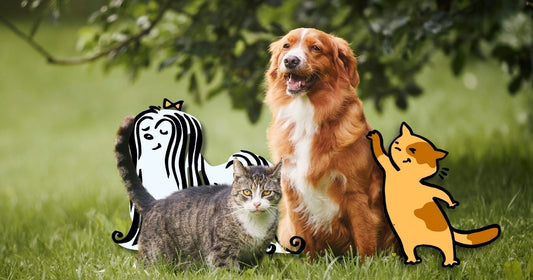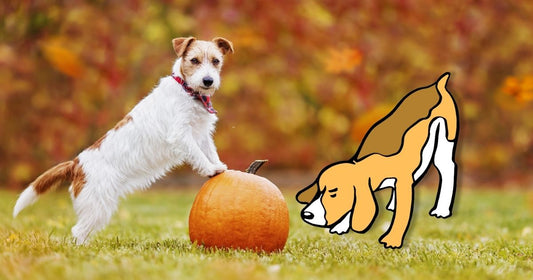Contents
We all love having household plants in our homes. Not are they beautiful but they are excellent for you to have in your home! Studies have proven that house plants improve concentration and productivity (by up to 15%), reduce stress levels, and even boost your mood. But did you know that many of the plants in our households are toxic to pets?
Below is a list of 9 common household plants that are toxic to our pets and found in many homes across the United States.
Cannabis

Cannabis poisoning (from plants, leftover matter, and edibles) is one of the most common plant poisoning vets see, especially in dogs.
Cannabis affects cat and dogs' neurological systems. Some of the symptoms are incoordination, tremors, drooling, seizures, possible respiratory problems, depression, and even coma.
Lilies

Lilies (such as peace lily, calla lily, Easter lily, and Tiger-lily) are highly toxic and potentially fatal to cats. Some types are toxic to dogs also.
Some of the symptoms include vomiting, diarrhea, lack of appetite, stomach pain, depression, difficulty swallowing, kidney damage, kidney failure, and multiple organ failure, leading to the death of your furry loved one.
It would probably be best to avoid having any plant from the lily family in or around the home. And don't forget to be mindful of gifted flowers. Yes, they are beautiful, but we don't want to harm your fur-baby!
Sago Palms

Sago palms (cycads) are commonly found in tropical and ornamental gardens but are also found inside homes because they are easy to care for.
All parts of the plant are highly toxic to dogs. If your dog ingests sago palms, they will more than likely start vomiting and have diarrhea. There is also a chance that they will have liver damage, liver failure, and even multiple organ failure.
We highly suggest avoiding having any of the sago palms in and around your home if you have pets.
Ivy Devil's or Golden Pothos

The ivy is a beautiful, always growing plant for your home. However, many popular ivy plants, including English ivy and Devil's ivy/Golden Pothos, are still toxic to pets.
Although they are only a moderate threat, still dangerous, if your pet ingests ivy, they may end up with mouth and stomach irritation, excessive drooling, foaming at the mouth, swelling of the mouth, tongue, and lips, and may end up vomiting and have diarrhea.
Philodendrons

The philodendron plants, also known as Swiss cheese plant, heartleaf, and fiddle-leaf philodendron, has a toxicity level of mild to moderate for both cats and dogs.
Some symptoms would be oral irritation, pain, and swelling of mouth, tongue, and lips, which can cause excessive drooling and difficulty swallowing.
Are Rubber Plants Toxic to Cats & Dogs?

Rubber tree plants (such as Japanese/Chinese/jade rubber plant and Indian rubber plant) are moderately toxic to cats and dogs. They are easy to grow and maintain, but your feline friend would love to get their mouths on it.
If they were to ingest the rubber tree plant, they could end up a decreased appetite, drooling, vomiting, diarrhea, depression, and even some skin irritation.
Aloe Vera

We know how aloe vera helps human burns or cuts for healing but has mild to moderate toxicity for cats and dogs.
If one of your fur-babies were to get a bite of the medicinal plant, they may end up vomiting, have diarrhea, act lazy, and even show signs of depression.
Chinese Evergreen

Although there are many types of Chinese Evergreen houseplants, they are all toxic to house pets. The Chinese evergreen's level of toxicity is mild to moderate.
When your pet decides to eat an evergreen, they may end up with some irritation, pain, and swelling of mouth, tongue, and lips. There will be excessive drooling and potentially vomiting. Some more severe symptoms may include liver and kidney damage.
Corn Plant

The Corn Plant or Dracaena Fragrans is a common, easy to care for house plant that can be found in many homes. However, it is also toxic to pets.
Some of the signs you will see if Fido or kitty ingest part of your corn plant would be vomiting (occasionally with blood), depression, anorexia, hypersalivation, and dilated pupils (cats).
We should all have plants in our homes because of all the great things they can do for us mentally and physically. But if you have furry friends in the house with you, and you always take care of them by buying healthy products such as salmon oil for cats, make sure that the plants you get are not harmful to them. The ASPCA has a great link with a list of the toxic and non-toxic plants, so be sure to check it out.
Vital Pet Life




